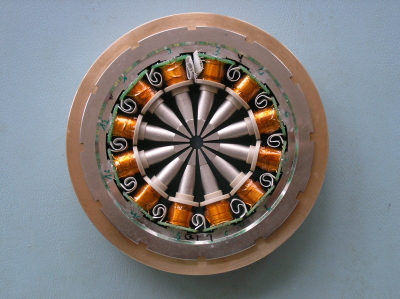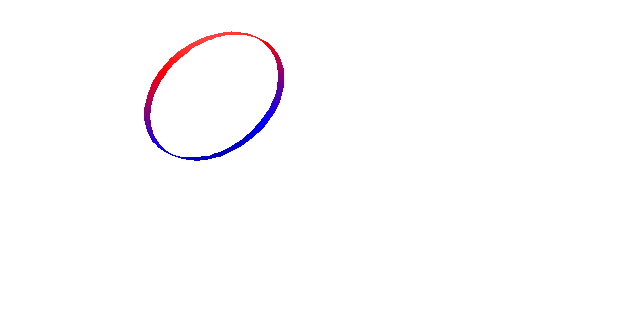Description of an exemplary chromatic corrector

This picture shows a dodecapole. The central aperture for the beam path is surrounded by twelve coils.
According to Scherzer a correction is never possible using rotational symmetric devices as lenses. In order to compensate for chromatic aberration the operation principle of a Wien Filter could be applied. Such a filter is an electron optical device with a freely tunable dispersion. It consists of mutually perpendicular electric and magnetic fields. Extending this concept to mutually perpendicular electric and magnetic quadrupoles results in a focussing system with freely tunable dispersion, that is a lens with a variable chromatic aberration.
Unfortunately such a quadrupole shows negative dispersion in one plane (for example x) and a positive one in the y-direction. Therefore the chromatic aberration of a preceding lens could only be corrected in the x-plane and would be increased in y-direction.
A special trick has to be applied: The beam is squeezed together in y-direction at the plane, where the corrective element is placed. So the increase in aberration in y-direction is ineffective, but the decrease in x-direction works. The correction in y-direction is achieved by placing a second corrective element, rotated by 90° in a plane, where the beam is squeezed in x-direction. These effects on the beam paths are shown below. The necessary deformation of the beam is achieved by using further quadrupole elements.

functional principle chromatic corrector animation
This information and more instructive illustrations can be obtained from the article "Next Generation of Electron Microscopes" by J.Zach and M.Haider in NanoGuide 08. You can order a reprint of this magazine from info@ceos-gmbh.de.

